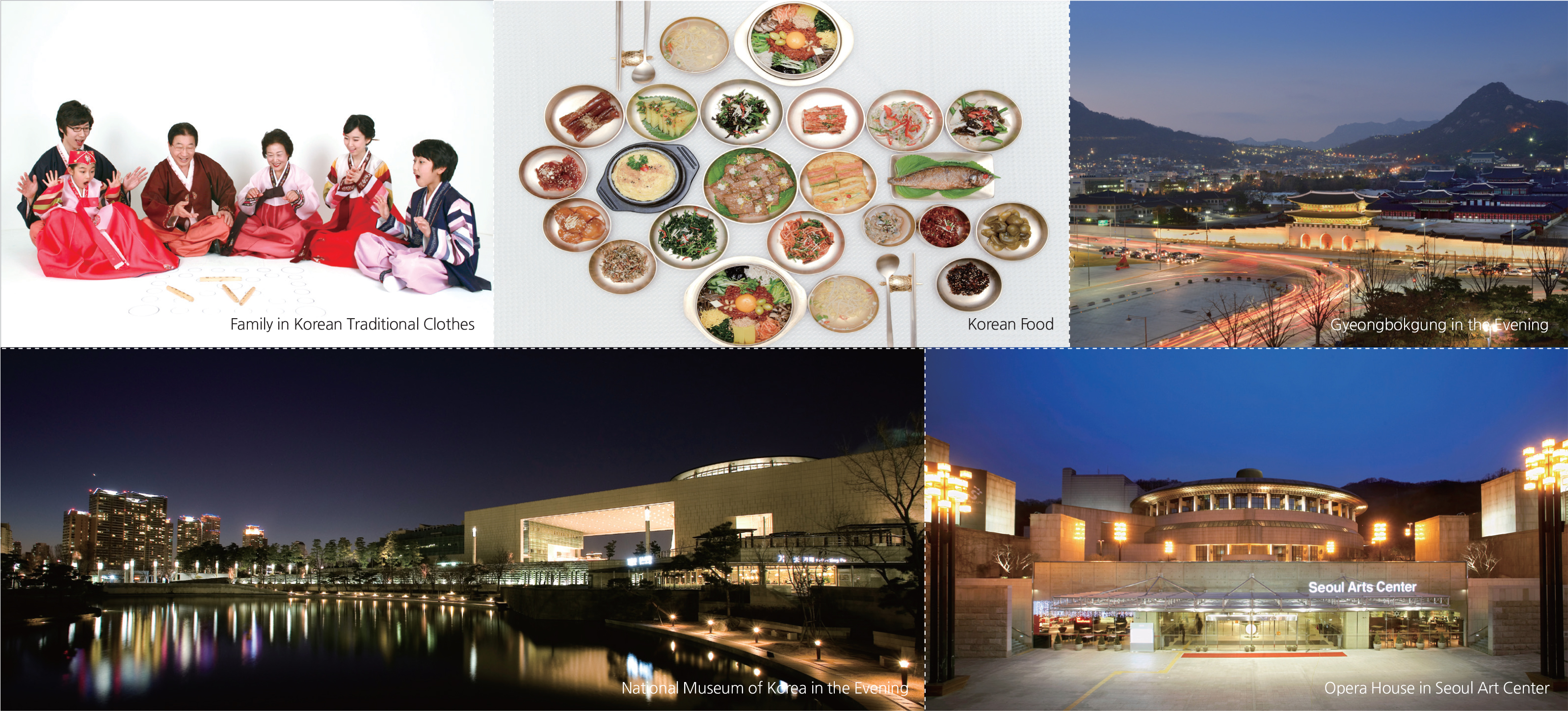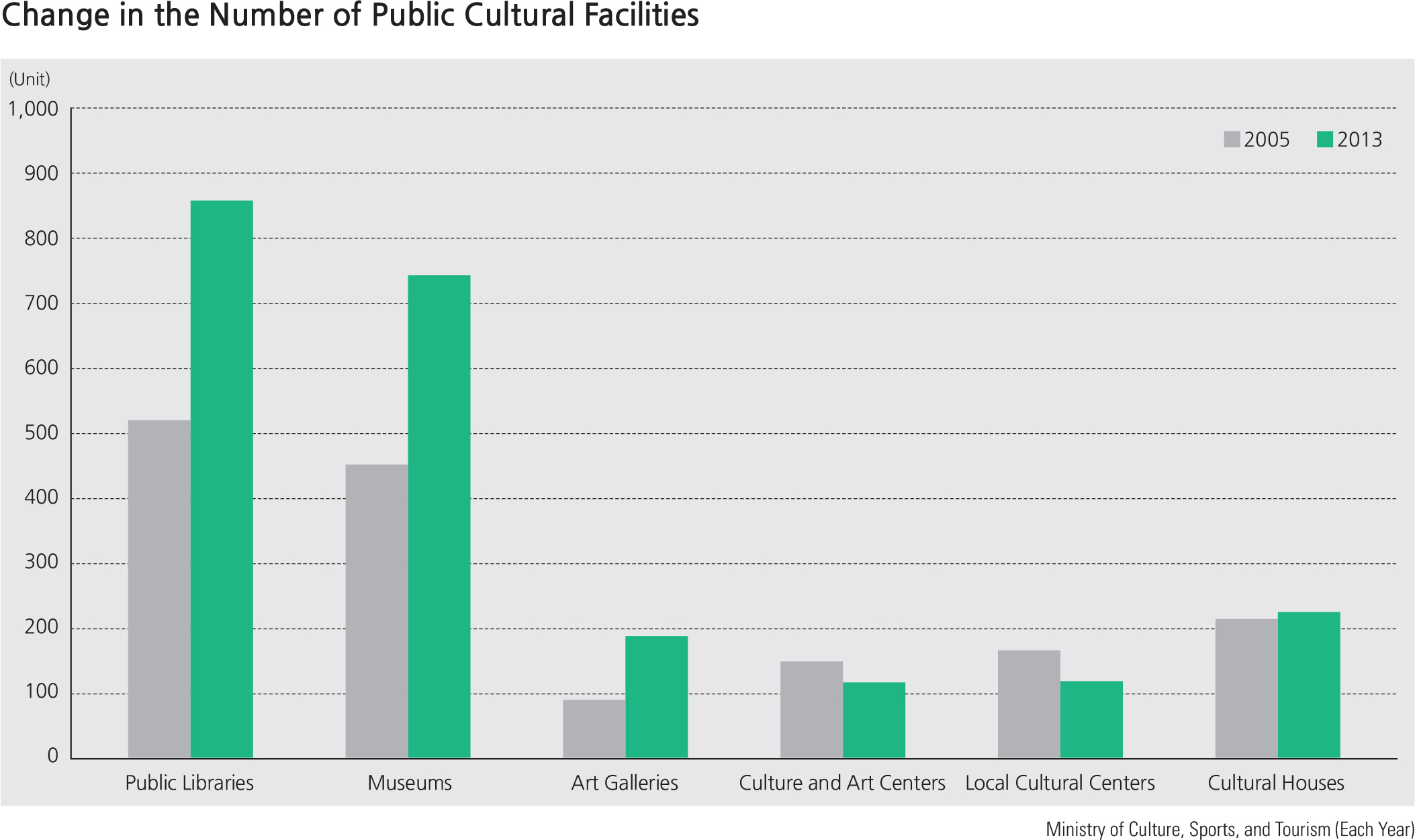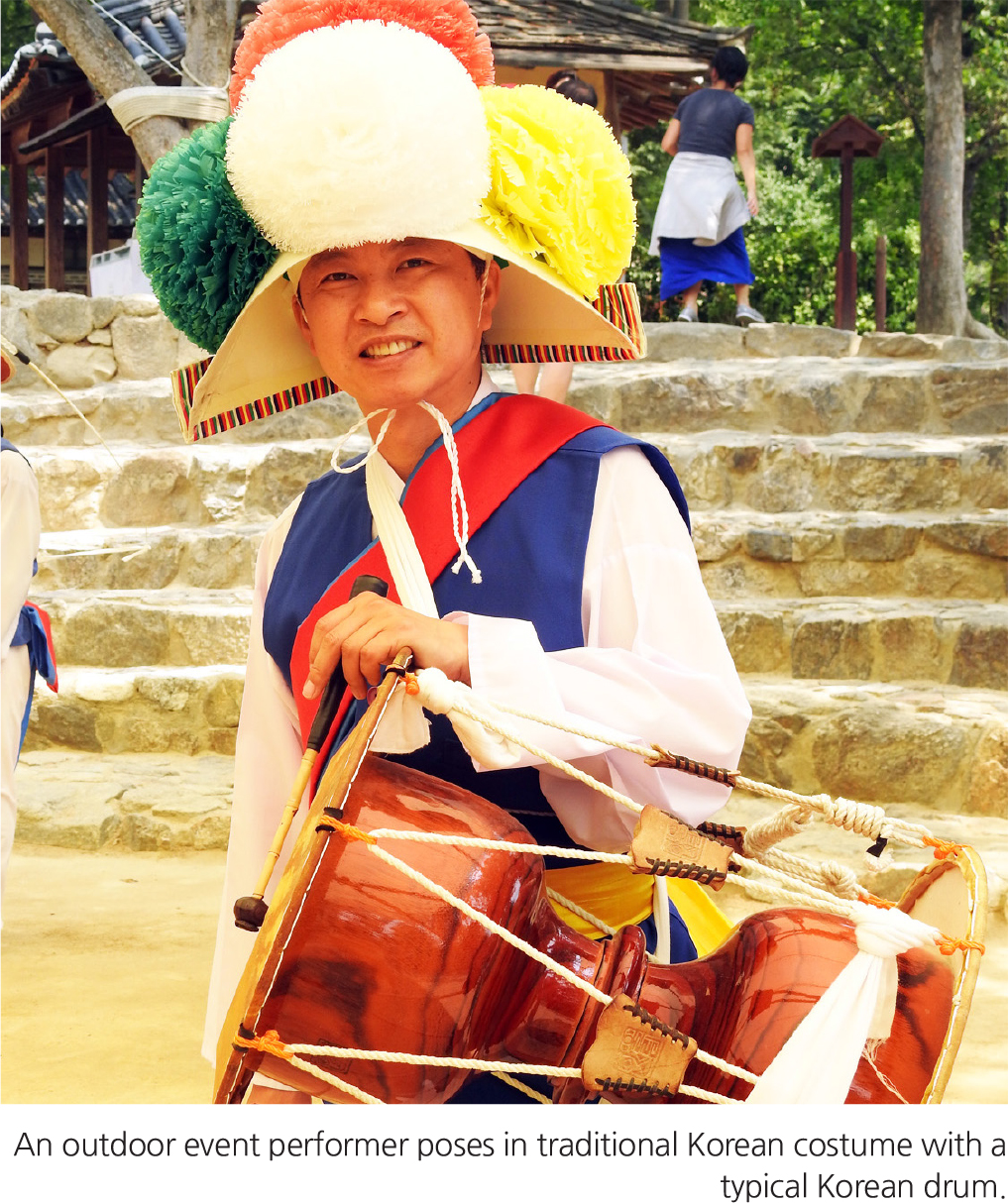The Korean people have developed and maintained their unique national culture for a long time. The national culture of Korea emerged as an adaptation to the natural environment. The arrangement of mountains and plains, as well as climate, is the foundation of the cultural determinants of the Korean people. The Korean way of life, as represented by food, clothing, and housing, is central to understanding Korean culture. Clothing materials and the development of clothing culture, various food processing methods and new food ingredients, and harmony between nature and residential space in overcoming natural restrictions, all are components in the traditional culture that influence the Korean way of life. However, traditional Korean culture is not confined to a way of life formed through adaptation to the environment. Traditional Korean culture displays cultural diversity that embraces both traditional heritage and other cultures. Various cultures were introduced into the country, and then absorbed into Korean culture sometimes Korean culture has spread to the outside world. The traditional way of life changes to fit the conditions of modern life.
Interest in the improvement of living standards and culture are related to the growing demand for space to accommodate cultural activities and cultural diversity for the enjoyment of a variety of cultural activities, such as libraries, museums, theaters, and art galleries. Additionally, facilities and spaces for movies, sports, and other physical activities have become important factors in the modern daily lives of Koreans. Overall, Korean modern life and culture have rapidly changed as cultural, leisurely, and recreational opportunities and venues have expanded and diversified.
In addition to diversified cultural facilities, Korea has also established many national parks, some with geomorphic wonders, to supplement UNESCO World Heritage Centers to provide Koreans with leisurely activities as well as attract global visitors and tourists. All these facilities and parks are evenly distributed in each region of the country and designed to meet the basic cultural demands of the local population. In addition, the cultural infrastructure carries significant meaning related to the cultural rights of people.
Facilities such as libraries, museums, and art galleries have been steadily increasing in number and expanding in size and diversity in accordance with the growing demands of local residents. Various programs operate in each region based on cooperation with local communities. Within libraries and museums, exhibitions and collections have been expanded. Theaters and exhibition centers which offer various programs have been increasing in number and attracting more patrons and visitors.
The digital age ushers in yet another dimension of Korean culture in the form of new wave and K-pop entertainment culture in songs, movies, and videos. Similar to the kung fu movie culture from Hong Kong and the Bollywood culture from India, the Korean Wave is invading the world. The diffusion of Korean Wave or K-pop into huge markets in China, Japan, Hong Kong, Taiwan, Southeast Asia, Europe and North America brings a new avenue for cultural diffusion and a new and significant economy to the Korean entertainment industry. Internet apps such as YouTube helped popularize the now famous “angnam Style” dance video worldwide. A large number of Korean movies are now available in major US movie channel providers. Korean immigrants in large US cities such as Los Angeles, Atlanta, Honolulu, Houston, and Chicago are proud to showcase their culture, share their food, as well as music and dance with their US friends. In fact, Korea Town in New York City is adjacent to the Empire State Building where many business people as well as tourists are exposed to the Korean culture every day.
Brief Interpretation of the Map
The 2005–2013 Changes in Public Cultural Facilities mappresents two sets of spatial data. The first set is based on thepercentage of change on the number of cultural facilities at the -si/-gun/-gu level. The green shades on the map illustrate the percentages of increase while the grey anddark grey shades depict percentage decreases. A quick countof the yellow and red shades indicates that there are only a handful of-si/-gun/-gu units that experienced a decrease; the rest of the nation shows modest to very large increases, even in excess of 180%. The second dataset displays the absolute numbers of cultural facilities as classified into libraries, museums, art galleries, cultural and art centers, local cultural centers, and cultural houses. This seconddataset clearly verifies the higher concentrations of culturalfacilities in metropolitan centers as they must serve very large numbers of people.
Is it a fair statement to say that people who live in rural areas are disadvantaged as far as having so few cultural facilities available to them? Justify your yes or no answer by analyzing operating costs of these facilities, or by distances a rural resident must travel to visit these facilities, or by the efficiency of transportation. If you are a rural resident, would you welcome a trip to the city or would yoube satisfied with just visiting the local cultural facilities?



